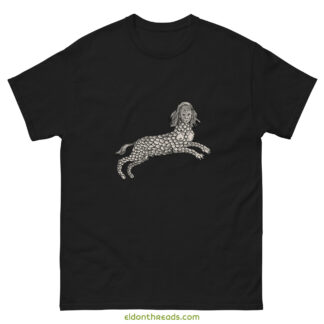Description
An illustration from The History of Four-Footed Beasts and Serpents (1658) by Edward Topsell.
The lamia is portrayed as a creature with the upper body resembling that of a woman, including the face and breasts. However, its lower body consists of goatlike hind quarters, which are accompanied by large and unclean “stones” (referring to testicles) that emit a strong odor resembling sea-calves, as mentioned by Aristophanes. Additionally, the lamia is described as being covered in scales throughout its body.
In ancient Greek mythology, the Lamia is portrayed as both a child-eating monster and a night-haunting spirit. Initially, Lamia was a beautiful queen from Ancient Libya who had an affair with Zeus, resulting in their children. However, when Zeus’s wife Hera discovered the affair, she took away Lamia’s children, either by kidnapping or killing them. This immense loss drove Lamia to madness, leading her to seek vengeance by snatching and devouring any children she could find. As a consequence of her cruel actions, Lamia’s physical appearance transformed into an ugly and monstrous form.
Zeus, feeling pity for Lamia, granted her the power of prophecy and the ability to remove and replace her own eyes. This could be due to a curse from Hera, causing Lamia to suffer from insomnia or rendering her unable to close her eyes, thus constantly tormented by the memory of her lost children.
Over time, the lamiai became associated with seductive phantoms, often equated with the empusai. These creatures would seduce young men to satisfy their sexual desires and then consume their flesh. The defeat of a lamia-seductress by Apollonius of Tyana inspired the famous poem “Lamia” by John Keats.
The Lamia is often described with serpentine qualities, with connections drawn to ancient texts depicting half-woman, half-snake beings. Creatures like this appear in the song “The Lamia”, a song on the Genesis album The Lamb Lies Down on Broadway.
In previous centuries, Lamia was used in Greek folklore as a boogeyman figure to scare children into obedience.

Classic 100% cotton tee with taped neck and shoulders, and a double seam at the sleeves and bottom hem. Eldon Threads logo printed discreetly on the reverse as an outer label just below the neck. Open-end yarn. Tubular fabric. Fabric weight: 5.0–5.3 oz/yd² (170-180 g/m²).
Let ELDON THREADS inspire and empower you, as you embark on your own journey of discovery…













